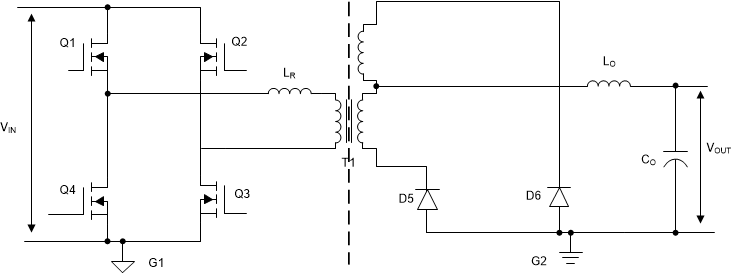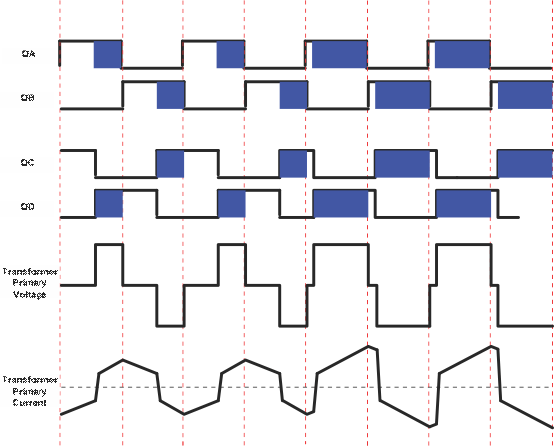TIDUEO1B April 2021 – June 2021
- Description
- Resources
- Features
- Applications
- 5
- 1General Texas Instruments High Voltage Evaluation (TI HV EVM) User Safety Guidelines
- 2System Description
- 3System Overview
-
4Hardware, Software, Testing Requirements, and Test Results
- 4.1 Required Hardware and Software
- 5Design and Documentation Support
- 6Terminology
- 7About the Author
- 8Revision History
3.2.1 Basic Operation
A PSFB converter consists of four-power electronic switches (like MOSFETs or IGBTs) that form a full-bridge on the primary side of the isolation transformer and diode rectifiers or MOSFET switches for synchronous rectification (SR) on the secondary side. This topology allows the switching devices to switch with zero voltage switching (ZVS) resulting in lower switching losses and an efficient converter.
For such an isolated topology, signal rectification is required on the secondary side. For systems with low output voltage and/or high output current ratings, implementing synchronous rectification instead of diode rectification achieves the best possible performance by avoiding diode rectification losses. In this work, synchronous rectification is implemented on the secondary side.
 Figure 3-2 A Phase-Shifted Full Bridge
Circuit
Figure 3-2 A Phase-Shifted Full Bridge
Circuit Figure 3-3 PSFB PWM Waveforms
Figure 3-3 PSFB PWM Waveforms